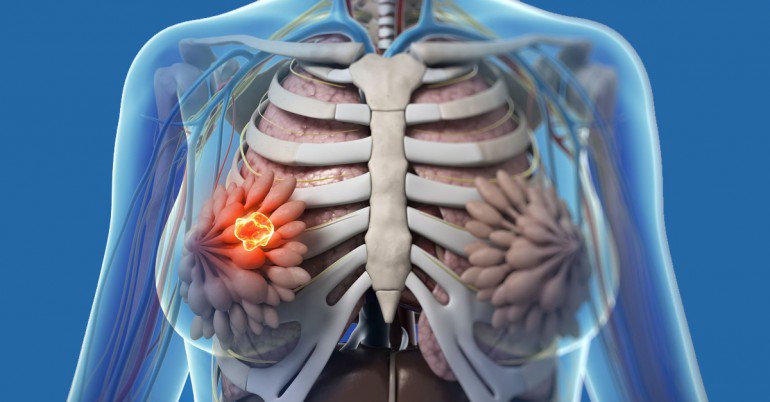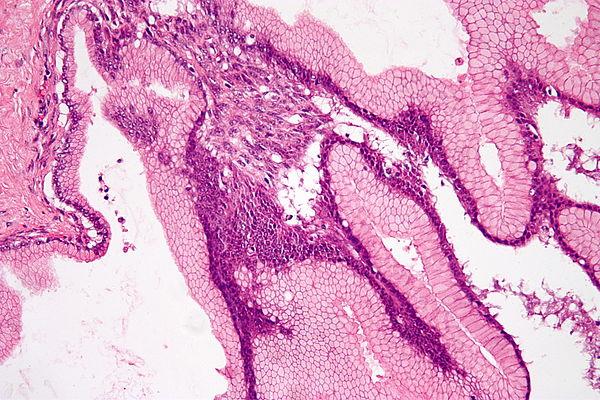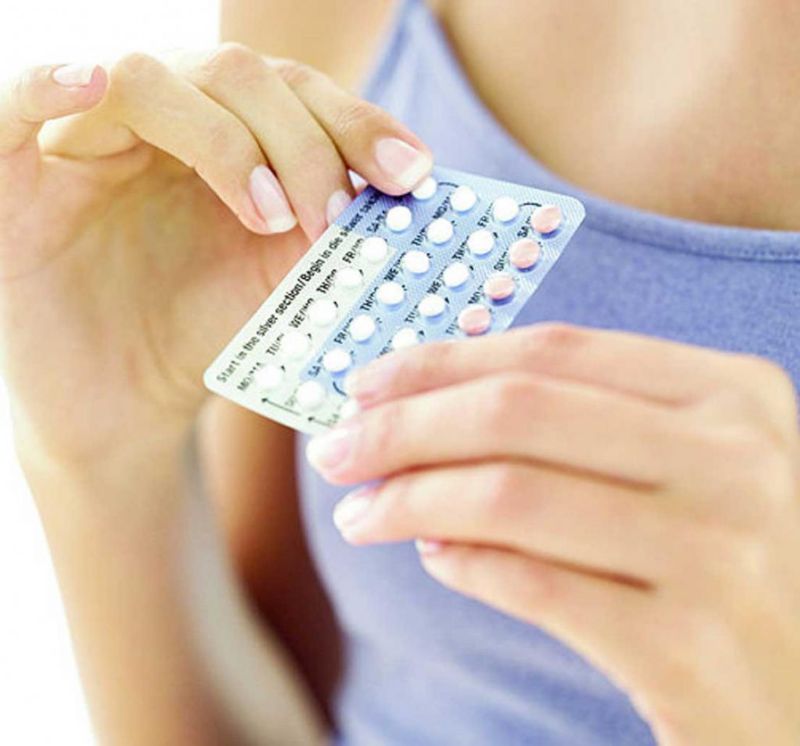Benign breast dysplasia is a very common problem. In this case, we are talking about the pathological proliferation of glandular and connective tissues, which often leads to the formation of cystic structures, seals and other formations. Despite the fact that the disease is considered benign, it causes a woman a lot of inconvenience. Moreover, in certain circumstances (in particular, in the absence of adequate therapy), the disease can lead to malignant degeneration of cells.
Of course, many patients are looking for information regarding this pathology. Why does breast dysplasia develop? What it is? What are the symptoms associated with? What treatment methods can a doctor offer? Is it possible to somehow protect yourself from the development of an ailment? The answers to these questions are important.
Benign breast dysplasia: what is it?

To begin with, it’s worthwhile to deal with general information. About benign dysplasia is said if there is a pathological proliferation of glandular tissue in the chest. This changes not only the volume of glandular tissues, but also their structure and degree of functionality. In addition, pathological processes also include connective tissue structures, which often leads to scarring and other complications.
By the way, ICD-10 assigned pathology code N60. Of course, this number combines a variety of forms of the disease. For example, code N60.1 is used to indicate cystic diffuse benign breast dysplasia. By number 60.3 is meant fibroadenosis.
Many women are faced with a diagnosis such as benign breast dysplasia 60.8. What does this conclusion mean? Similarly, a doctor can indicate the presence of papillomas inside the ducts of the gland, the formation of special types of benign tumors. Under code 60.9, an unspecified benign breast dysplasia is encrypted (in this case, the causes of the development of the disease, as well as some features of the clinical picture, are unknown).
There are dozens of forms of benign dysplasia. The most common types of disease we consider below.
Why does pathology develop? The list of main reasons
We have already figured out what breast dysplasia is. But why does pathology develop? There are actually a huge number of reasons and risk factors:
- According to statistics, in most cases, the cause of the development of the disease is hormonal failure, in particular, a sharp increase or decrease in the level of estrogen and / or progesterone. This, in turn, can be associated with various diseases, emotional state, gynecological procedures. For example, a jump in hormones occurs after an abortion (natural or intentional).
- Potentially dangerous is hyperandrogenism - a condition that is accompanied by an increase in the level of male hormones in the female body.
- Sometimes dysplasia develops against the background of disorders in the hypothalamic-pituitary system (for example, sometimes the pituitary gland synthesizes too much prolactin).
- Of great importance is the emotional state of the patient. Chronic stress, a constant stay in a difficult psychological atmosphere - all this affects the hormonal background. By the way, risk factors include sexual dissatisfaction and prolonged sexual abstinence.
- Dysplasia often develops against the background of diseases of the reproductive system, in particular, endometrial hyperplasia, uterine fibroids. Potentially dangerous are any inflammatory diseases of the genital area, including infectious ones.
- The disease can be the result of aptosis - a condition in which cells participate in their own destruction. This process is accompanied by inflammation, as well as a violation of capillary blood flow in the chest, a change in the structure and physiological characteristics of the glandular tissue.
- Risk factors include the early onset of menopause. If this happened at the age of 50-52 years, then the likelihood of developing dysplasia increases significantly.
- A hereditary predisposition also plays a role.
Features of the clinical picture: what symptoms should I look for?

It has already been discussed above why benign breast dysplasia develops and what it is. Now you should familiarize yourself with the main symptoms that this disorder leads to:
- The initial stages, as a rule, are asymptomatic. Only occasionally can a woman feel palpation during breast palpation. As the disease progresses, pain appears. These are the first signs of breast dysplasia.
- The pain can be of a different nature, but, as a rule, it intensifies before the onset of menstruation. The patient's condition in most cases improves after the end of menstruation.
- Constant irritation, apathy, depressive states are secondary signs of breast dysplasia. Such emotional changes are associated with both hormonal disorders and the constant discomfort that the patient suffers from.
Of course, a lot depends on the form of the disease, whether it is unspecified benign breast dysplasia or any other of its kind. Symptoms may vary depending on the presence of certain concomitant diseases. Nevertheless, noticing such symptoms in yourself, you need to see a doctor urgently.
Types of disease

Against the background of benign dysplasia, proliferative changes in the structure of epithelial and connective tissues of the breast occur. Depending on the characteristics of the clinical picture and pathological processes, several forms of such a disease are distinguished:
- The proliferative form of the disease is accompanied by pathological division of the epithelium of the ducts and lobes. Connective tissue is rarely affected.
- If we are talking about non-proliferative benign breast dysplasia, then it is worthwhile to understand that the proliferation process affects fibrous tissue. Pathology is often accompanied by the formation of multiple small cystic structures (sometimes they merge into one large cyst).
- Fibroadenoma is a lump formed by glandular and connective tissue. Typically, the structure has a fibrous capsule. Despite the fact that the formation is benign, in about 20-50% of cases, at one time or another, malignant degeneration of cells occurs and cancer develops.
- Intraductal papilloma is another type of dysplasia. This is a papillary structure that is formed from epithelial cells of the ducts.
Dyshormonal forms of dysplasia

Dyshormonal breast dysplasia is accompanied by the same pathological changes in the structure of glandular and connective tissues. Nevertheless, this form of pathology proceeds with very pronounced changes in the hormonal background. In modern medicine, its two types are distinguished: diffuse and nodular mastopathy.
Diffuse dishormonal breast dysplasia is also divided into several subspecies. You should familiarize yourself with the information about them:
- Adenosis is a diffuse form of mastopathy, which is accompanied by proliferation of glandular tissue. In most cases, young and not yet giving birth women face such pathology. The disease is accompanied by pain on palpation of the chest, which intensifies during menstruation.
- Fibroadenomatosis is diffuse dysplasia of the mammary glands, which is characterized by pathological proliferation of fibrous tissues. During palpation, you can feel small seals in the chest. Pain in this case is less pronounced.
- Diffuse mastopathy is accompanied by the formation of single or multiple cysts. When probing the gland, you can feel small nodules with clear boundaries. The pain in this case is bursting.
- Fibrocystic mastopathy is a mixed form of pathology. By the way, in most cases, the disease is accompanied not only by pain, but also by inflammation, swelling, the appearance of uncharacteristic discharge from the nipples. According to statistics, in most cases, a similar problem is faced by mature women aged 35 to 40 years.
There are other benign breast dysplasias, but they are extremely rare. In any case, it is worthwhile to understand that each form of pathology requires a thorough diagnosis and individual treatment. In the absence of therapy, the likelihood of developing cancer is very high.
Diagnostic measures

Of course, having noticed the symptoms described above (nodules in the chest, periodically occurring pains), you need to contact a specialist. Of course, in order to make a correct diagnosis, not only an external examination will be required, but also an instrumental examination. It should be understood that during the diagnosis it is very important not only to confirm the presence of dysplasia, but also to find out the cause of the disease.
- An important step in the diagnosis is an initial examination. To begin with, the doctor collects information for making an anamnesis, is interested in the presence of certain symptoms, asks questions about certain diseases among close relatives.
- A physical examination of the breast is mandatory. During palpation, the doctor may detect abnormal seals under the skin. By the way, the procedure is best carried out from 7 to 10 days of the cycle. During the examination, the doctor draws attention to the nearby lymph nodes (it is important to check if they are enlarged).
- Today, the most informative diagnostic method is mammography. X-ray examination allows you to get a multidimensional image of the mammary gland. In the picture, the doctor can more closely examine the seals (whether they are cysts, papillomas, adenomas), accurately determine their size and location. With the help of such a study, dynamic monitoring of the neoplasm is also carried out. Thus, a specialist can check how effective the medicine is, whether it was possible to stop the further development of dysplasia.
- Sometimes doctors recommend additionally doing magnetic resonance imaging. This is a more expensive study, which, however, gives much more accurate results.
- In addition, dopplerographic scanning is performed. Using ultrasound equipment, the doctor can carefully examine the organ, assess the degree of its blood supply. This is a simple and safe procedure, which is carried out in almost every clinic.
- If there is a suspicion of a malignant process, then a biopsy is performed. Using a thin needle, the doctor collects samples of interest to him (for example, removes the fluid that fills the cyst), then sends them for laboratory analysis.
- Additionally, the patient is sent for a gynecological examination, and then for a consultation with an endocrinologist. Of course, it is important to take blood tests to check the level of certain hormones.
Benign breast dysplasia: how to treat?

The treatment regimen is based on the results obtained during the diagnosis. The treatment of breast dysplasia is made individually, as it depends on the form of the disease, the stage of its development and the characteristics of the clinical picture.
- Since in most cases the occurrence of dysplasia is to some extent associated with hormonal disorders, the basis of therapy is the administration of progestogens. It can be both medications for internal use, and funds for external use. Progesterone-gel is considered very effective. This tool must be applied to the skin of the chest. Thus, the maximum concentration of progesterone is observed precisely in the tissues of the mammary gland, and no more than 10% of active substances penetrate into the systemic circulation, which significantly reduces the likelihood of side effects. It is worth noting that the treatment of benign breast dysplasia lasts quite a long time (sometimes several years). The patient takes hormones for several months, after which a break is made, and then therapy is resumed. Of course, various examinations are carried out throughout the entire time in order to study the dynamics of the development or regression of the disease.
- Agonists of dopamine receptors (for example, "Bromocriptine") are often introduced into the treatment regimen. Such drugs inhibit the production of growth hormone and prolactin in the pituitary gland, which allows you to control all changes in the overall hormonal background.
- Selective estrogen receptor modulators are also used (Tamixifen is considered effective).
- Therapy necessarily includes taking sedatives, because, according to statistics, the development of dysplasia is often associated with emotional stress. Of course, it is impossible to change the way of life and completely eliminate stress, but with the help of drugs you can change the reaction to a particular event. In modern medicine, mainly natural sedatives are used, for example, valerian root (tablets or solution with extract), motherwort tincture, etc.
- Often in the treatment regimen include taking medications made on the basis of pink rhodiola or eleutherococcus. Such drugs stimulate the activity of the nervous system. The combined use of sedatives and adaptogens helps maintain a balance between the processes of excitation and inhibition in the brain.
- Mandatory is the intake of vitamins. To begin with, it is worth saying that these substances strengthen the immune system, improve the functioning of the body and have a beneficial effect on the liver, in the tissues of which estrogen inactivation occurs. Vitamins C and P improve blood circulation, relieve breast edema. Vitamin B6 directly affects prolactin levels. Vitamin A has an antiestrogenic effect.
- Many patients complain of periodically occurring and very painful swelling of the mammary glands (as a rule, this is observed before and during menstruation). In such cases, diuretics are used that help to quickly remove excess fluid from the tissues. If we are talking about a small edema, then there will be enough traditional medicine (for example, tea from lingonberry). In more complex cases, patients take Furosemide, but always in combination with potassium preparations (Furosemide leaches potassium from the body, which is fraught with dangerous complications, in particular, heart problems).
- If the patient has problems with the intestines, then drugs that improve digestion, stimulate peristalsis and support the vital activity of beneficial microflora are used. As you know, with various digestive problems (for example, constipation, dysbiosis) in the intestine, estrogens that are already excreted with bile are adsorbed repeatedly and again enter the bloodstream. That is why it is important to maintain the normal functioning of the digestive tract.
- If there are any liver diseases, then you need to treat them.
- Symptomatic therapy is performed. If severe pain occurs, analgesics may be used. Non-steroidal anti-inflammatory drugs help cope with inflammation, relieve swelling, ease pain, and fight fever. Such drugs are prescribed individually, depending on the characteristics of the clinical picture.
- An equally important point is proper nutrition. Diet is an integral part of therapy. The basis of the diet should be fruits and vegetables, preferably in raw form, because fiber is a mechanical stimulator of intestinal motility. With dysplasia, legumes and soy will be useful. Allowed meat and fish (low-fat varieties), cereals, soups. It is better to cook dishes for a couple or bake. Spicy, oily and too salty foods should be discarded. Alcohol and carbonated drinks are contraindicated. It is necessary to minimize the consumption of chocolate, coffee and products containing large doses of caffeine.
Alternative methods of treatment
Therapy in the presence of benign breast dysplasia must necessarily be comprehensive. Sometimes doctors recommend using some recipes of traditional medicine:
- ( ), . .
- . , . . .
- . , , . . , 2-3 .
- . . , . . . , . , .
, . .
Surgical intervention
It has already been discussed above how breast dysplasia is treated, what it is and what symptoms are accompanied. In most cases, drug therapy makes it possible to take control of the course of the disease. But, unfortunately, sometimes it is impossible to do without surgical intervention.
If a cyst (or multiple neoplasms) has formed in the glandular tissues and the structure continues to grow, then patients are sometimes recommended to undergo a biopsy procedure. The doctor inserts a thin needle into the cyst cavity, thereby extracting its contents. After this, a special sclerosant is introduced - a substance that causes the cyst walls to stick together. This technique prevents re-filling of the cavity. The aspiration fluid obtained during the biopsy is sent for laboratory analysis. If blood impurities or atypical structures were found in the samples during the study, then a full-scale operation may be required, sometimes up to resection.
If a severe form of fibroadenomatosis occurs, then patients are sometimes also hospitalized and sent for a surgical procedure.
Preventive actions
Why do various forms of such a pathology develop, including unspecified benign breast dysplasia? What is it and what are the symptoms associated with the disease? We have already considered these points.

Under certain conditions, pathology can be extremely dangerous, so at least try to prevent its development. Unfortunately, specific prophylactic drugs do not exist, but doctors recommend following some simple rules:
- All diseases of the reproductive system should be diagnosed in time. It is important to complete the course of therapy and carefully follow all the doctor’s instructions.
- Take caution with medicines that can affect the level of certain hormones.
- It is very important to eat right, refuse sweets, flour, pickles, canned food and other junk food. Firstly, it positively affects the work of the body and provides it with useful substances. Secondly, such a diet helps maintain body weight within normal limits. Obesity is inevitably associated with changes in the hormonal background.
- Normal, regular sex life is also important. On the other hand, frequent change of partners and erratic sexual relations increase the likelihood of developing various infectious diseases and unwanted pregnancies.
- It is worth remembering that termination of pregnancy entails severe hormonal disruptions. It is better to use contraceptives (correctly selected).
- It’s good to keep fit. Regular walks in the fresh air, outdoor activities, jogging, training - all this positively affects the work of the body and prevents the development of obesity.
- Experts recommend strengthening the immune system by hardening the body and taking vitamins.
- It is important to avoid stress, emotional burnout, nervous strain - all this directly affects the level of hormones and under certain conditions can provoke the appearance or progression of existing benign lactic acid dysplasia.
- Every month you need to conduct an independent examination of the breast, gently feeling the glands. If during the procedure you find any seals, then you should contact a specialist.
Of course, in no case should one refuse regular preventive examinations, because the sooner breast dysplasia is diagnosed, the higher are the chances of a quick and complete recovery.